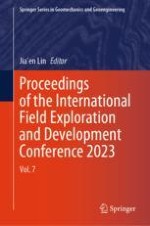2024 | OriginalPaper | Chapter
Technology of Soak After Hydraulic Fracturing to Increase Production in Tight Carbonate Gas Reservoirs
Authors : Bin Zhang, Yang Xu, Kun Wang, Xiang-hui Wan, Wen-xue Jiang, Yue-rong Wu
Published in: Proceedings of the International Field Exploration and Development Conference 2023
Publisher: Springer Nature Singapore
Activate our intelligent search to find suitable subject content or patents.
Select sections of text to find matching patents with Artificial Intelligence. powered by
Select sections of text to find additional relevant content using AI-assisted search. powered by
